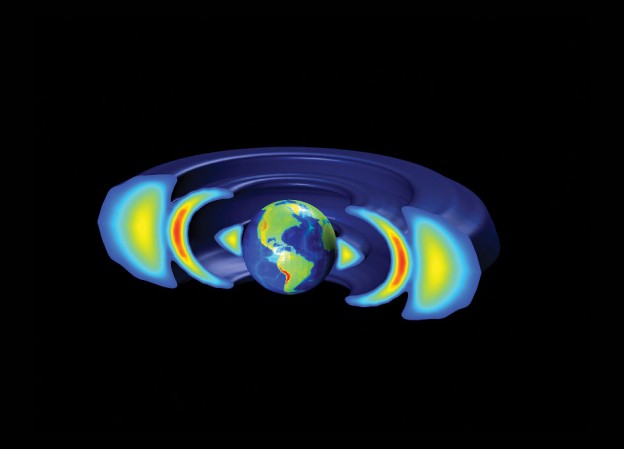Home » News (Page 2)
Zebra stripes in space resolves a half-century mystery
This structure is pretty close to the Earth, which is important because people want to understand the environment where satellites operate. Usually plasma undergoes a number of different instabilities, and waves tend to move from one region in space to another, so everything you see is noisy, very short-lived, and on smaller scales. But this structure seems to be very persistent, highly coherent in space, and was remarkably organized and structured, which we didn’t know could exist to such high degree.
Reanalysis Available
We have replaced our FTP server and restored the original reanalysis files.
Check the FTP, and please feel free to email us if you have any questions.
Version 1.0 is available, and we’ll be uploading a new version some time in the next two weeks with improved errors and GOES data coverage
Diffusion Coefficients available on FTP
The diffusion coefficients are now available again through the FTP. The reanalysis results will be made available again once the new hard drive is in.
Apologies for the inconvenience.
Unusual stable trapping of the ultrarelativistic electrons in the Van Allen radiation belts
RBM group scientists have successfully modeled and explained the unprecedented behavior of this third ring, showing that the extremely energetic particles that made up this ring, known as ultra-relativistic electrons, are driven by very different physics than typically observed Van Allen radiation belt particles. The region the belts occupy—ranging from about 1,000 to 50,000 kilometers above the Earth’s surface—is filled with electrons so energetic they move close to the speed of light.
‘Dropout’ Electrons Get Pushed out of Van Allen Belt
UCLA researchers showed that the missing electrons are swept away from the planet by a tide of solar wind particles during periods of heightened solar activity.
The data show that while a small amount of the missing energetic electrons did fall into the atmosphere, the vast majority was pushed away from the planet, stripped away from the radiation belt by the onslaught of solar wind particles during the heightened solar activity that generated the magnetic storm itself.
A Powerful Solar Storm Could Render Satellites Inoperable For Years
We found that in the absence of the cloud, electromagnetic waves accelerated large numbers of electrons to high speed in Earth’s inner radiation belt, causing a huge increase in radiation there. The inner radiation belt is densest at about 3000 kilometres above Earth’s equator, which is higher than low-Earth orbit. But the belt hugs Earth more tightly above high latitude regions, overlapping with satellites in low-Earth orbit.
